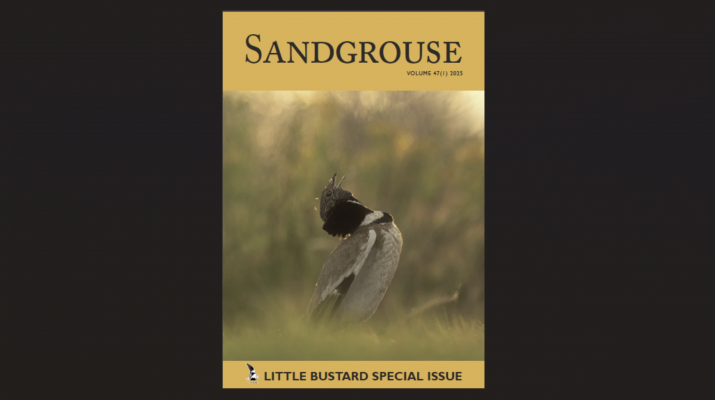This summer’s volume 47 of the ornithological journal Sandgrouse features comprehensive coverage of the status of the Little Bustard in its “eastern range.” A
Research
News about our research activities
Seminar on Eastern populations of the Little Bustard
On 15 March, the Ornithological Society of Kyrgyzstan, together with the Eurasian Bustard Alliance and the Ornithological Society of the Middle East, the Caucasus
Important Great Bustard wintering grounds in Uzbekistan
A new publication [pdf] in the journal “Geography, Environment, Sustainability” highlights the importance of wintering grounds in Uzbekistan to the survival of the Central
Multilingual Sandgrouse supplement now online
A new multilingual supplement to the Sandgrouse special issue on the Great Bustard in Central Asia (published in English) is now available. The special
First global review of bustard collisions with powerlines
“Bustards comprise a highly threatened family of birds and, being relatively fast, heavy fliers with very limited frontal visual fields, are particularly susceptible to
New Global Population Estimate for Great Bustards
A new population estimate by EBA Director Mimi Kessler finds that Central Asia, which encompasses 30% of the Great Bustard range, now contains just
Special Journal Issue on Great Bustards in Central Asia [updated]
A special issue of the ornithological journal Sandgrouse contains seventeen articles focusing on the Great Bustard, including many authored by partners of the Eurasian
Anthropogenic disturbance found to be main factor affecting habitat quality of Great Bustards in Western China
A joint study by researchers from the Xinjiang Institute of Ecology and Geography (XIEG) of the Chinese Academy of Sciences and Eurasian Bustard Alliance
Steppe by Steppe: a Presentation for OSME’s Summer Meeting
Dr Mimi Kessler presented a talk, “Steppe by Steppe: In Search of the Great Bustard in Central Asia” at the Summer Meeting of the
Winter Surveys Underway Across Three Countries
For the second year, we’re coordinating winter counts of Great Bustards in southern Kazakhstan, southeastern Kazakhstan, and Turkmenistan, in addition to the ongoing work










